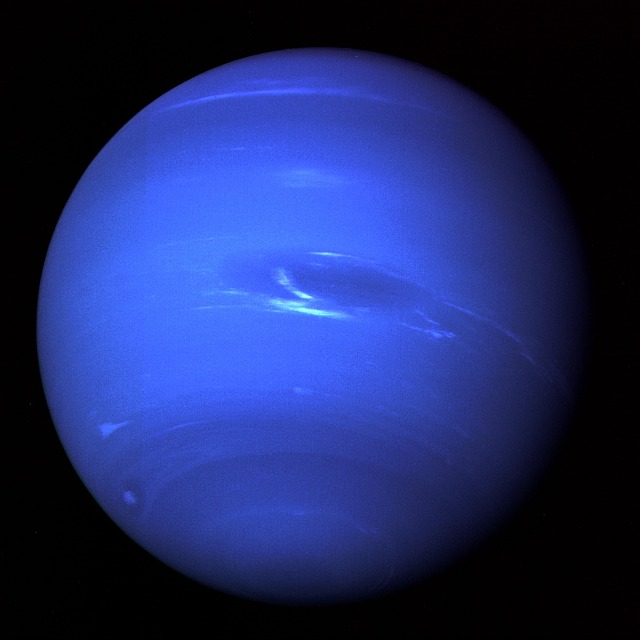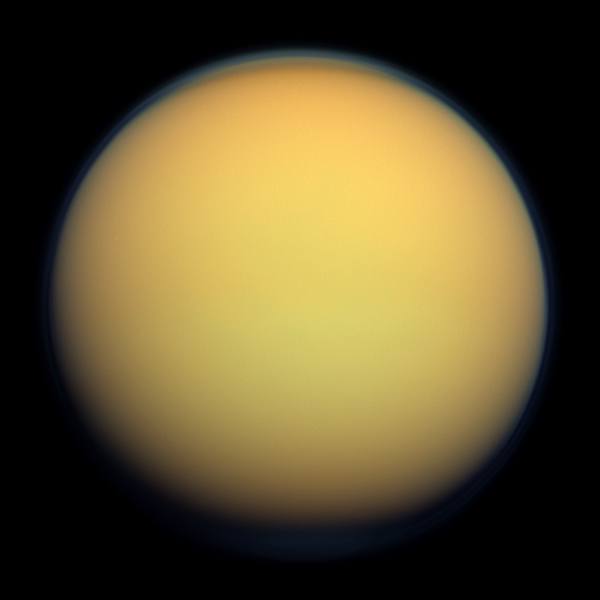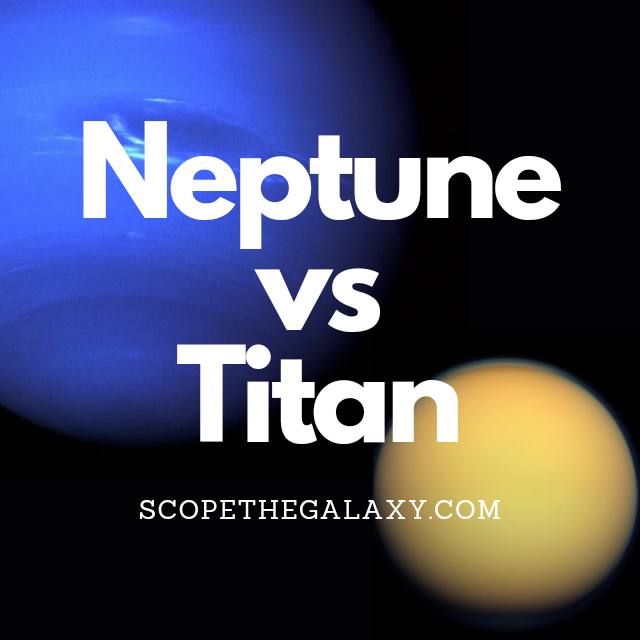*This post may contain affiliate links. This means we may make a commission if you purchase an item using one of our links*
The main differences between Titan and Neptune is that Neptune is a ice based gas giant that is just under 10 times larger than Titan in a diameter, It only orbits the Sun whilst Titan orbits Saturn, Neptune is an official planet whilst Titan is a natural satellite however, Titan is the only other celestial body in our solar system with a water cycle similar to that of Earth which Neptune does not showcase.
There are numerous other differences between the two so, continue reading if you want a more detailed breakdown of Neptune and Titan along with some of their similar and different features.
What Is The Planet Neptune?
Table of Contents

Neptune is the 8th farthest planet from the Sun and ranks among the bigger planets in our solar system. As the 8th farthest planet from the Sun, it does take Neptune a very long time to complete 1 orbital around the Sun.
This takes 165 years to complete which in comparison to the 16 hour 1 full spin around the axis is a massive difference.
In regards to its composition, Neptune is mostly made up of a thick swath of water closer to the center, methane, ammonia, hydrogen and helium molded around its Earth sized core.
As a result of the excess amount of methane and the inclusion of another undiscovered element within the atmosphere, Neptune’s color is a far deeper blue than the likes Uranus, which also has an abundantly methane based atmosphere.
The planet is 49,244km in diameter, making it roughly 4 times Earth’s diameter Earth, and would allow around 57 Earths to fit inside it. This also makes Neptune the 4th largest planet in our solar system.
Neptune is very cold mostly down to its distance from the Sun, where its atmospheric temperature sits between-220 to -230 degrees Celsius. Its core is far hotter coming in at 5,100 degrees Celsius and is the very likely cause for the liquid water present within the planet
Subsequently, the erratic temperature and gaseous composition of Neptune, is what constitute towards its turbulent behavior.
In fact Neptune has the fasted winds in our solar system, producing some that eclipse speeds of 2,000km per hour. The fastest winds on Earth would only be a fifth of these speeds at most.
At this moment in time we have discovered 14 moons orbiting Neptune and have also observed 5 thinner rings surrounding the ice giant.
What Is The Moon Titan?

Titan is Saturn’s largest moon and the second biggest moon in the entire solar system, with a diameter of 5,150km. This would make it even larger than the planet Mercury which is only 4,879km, and significantly larger than Pluto also.
As a result, Titan’s gravitational strength stands at around 1.352 m/s²
It is the only natural satellite in our solar system that is composed similarly to Earth, where it has a thick atmosphere made primarily of nitrogen (95%) along with smaller amounts of methane (5%). It has rivers and lakes on its surface along with a water cycle very similar to that of Earth, where essentially water evaporates and eventually lands on the satellites surface.
Therefore, much like Earth, Titan has a terrestrial based body but, there is a difference in their atmospheric pressure. The pressure on Titan’s surface is around 60% greater than that of Earth’s surface but, it isn’t nearly as dense.
Nevertheless, it is still far denser than most other bodies at 1.88 g/cm³. As a result, Titan’s mass is 1.345×10^23 kg.
In regards to its temperature, Titan is on the colder side where it averages around -179 degrees Celsius whilst its core’s temperature is actually very cold in comparison to other entities falling between 226 – 526 degrees Celsius.
As Saturn is the 6th farthest planet from the Sun, it will take Titan roughly the same amount of time to orbit the Sun, which would fall around 29.4 years.
It takes Titan 15 days and 22 hours to orbit Saturn. A day is 15 days and 22 hours also as it is tidally locked to the gas giant.
How Are Neptune And Titan Similar?
Neptune and Titan don’t share too many common features but there are the odd few they do share, which includes the below:
- Both planets are part of the same solar system.
- Both have a hotter central core.
- Both are a spherical shape.
- Both are part of the same solar system.
- Neither have tectonic plates.
Differences Between Neptune And Titan
In regards to the differences between the two, they would include the following.
- Neptune is far bigger with a diameter of 49,244 km compared to Titan’s that is 5,150km.
- Neptune has 14 moons whereas Titan has 0.
- Titan has 0 rings whilst Neptune has 6.
- Neptune is a gas based ice giant whilst Titan as terrestrial based natural satellite.
- Titan has a water cycle similar to that of Earth with rivers and lakes whilst Neptune does not.
- Neptune has a density of 1.64 g/cm³ whereas Titan’s density is 1.88 g/cm³.
- In regards to gravitational strength, Neptune’s is 11.15 m/s² whilst Titan’s is 1.352 m/s².
- Titan is tidally locked to Saturn whilst Neptune is not tidally locked to any other celestial object.
- Titan orbits Saturn elliptically whilst Neptune orbits the Sun in a circular pattern.
- A day on Neptune is 16 hours whilst a day on Titan is 15 days and 22 hours
- It takes Neptune 165 years to orbit the Sun whilst Titan orbits the Sun in 29.4 years just like Saturn.
- Neptune’s average temperature is -220 to -230 degrees Celsius whilst Titan’s average temperature is -179 degrees Celsius on average.
- In regards to their core temperatures, Neptune’s is 5,100 degrees Celsius whilst Titan’s is 226 – 526 degrees Celsius.
- Neptune’s mass is 1.024 × 10^26 kg whereas Titan’s is 1.345×10^23 kg.
- Neptune has an axial tilt of 28 degrees compared Titan’s that is 27 degrees.
- Neptune has a magnetosphere whilst Titan’s is negligible to non-existent.
Summary
Titan and Neptune are very different from one another even if both are part of the same solar system.
Whether it be in regards to their size, temperature, composition, density, their water cycles and more, it is obvious that the two are worlds apart in their functionality and their ultimate purpose within our solar system.

